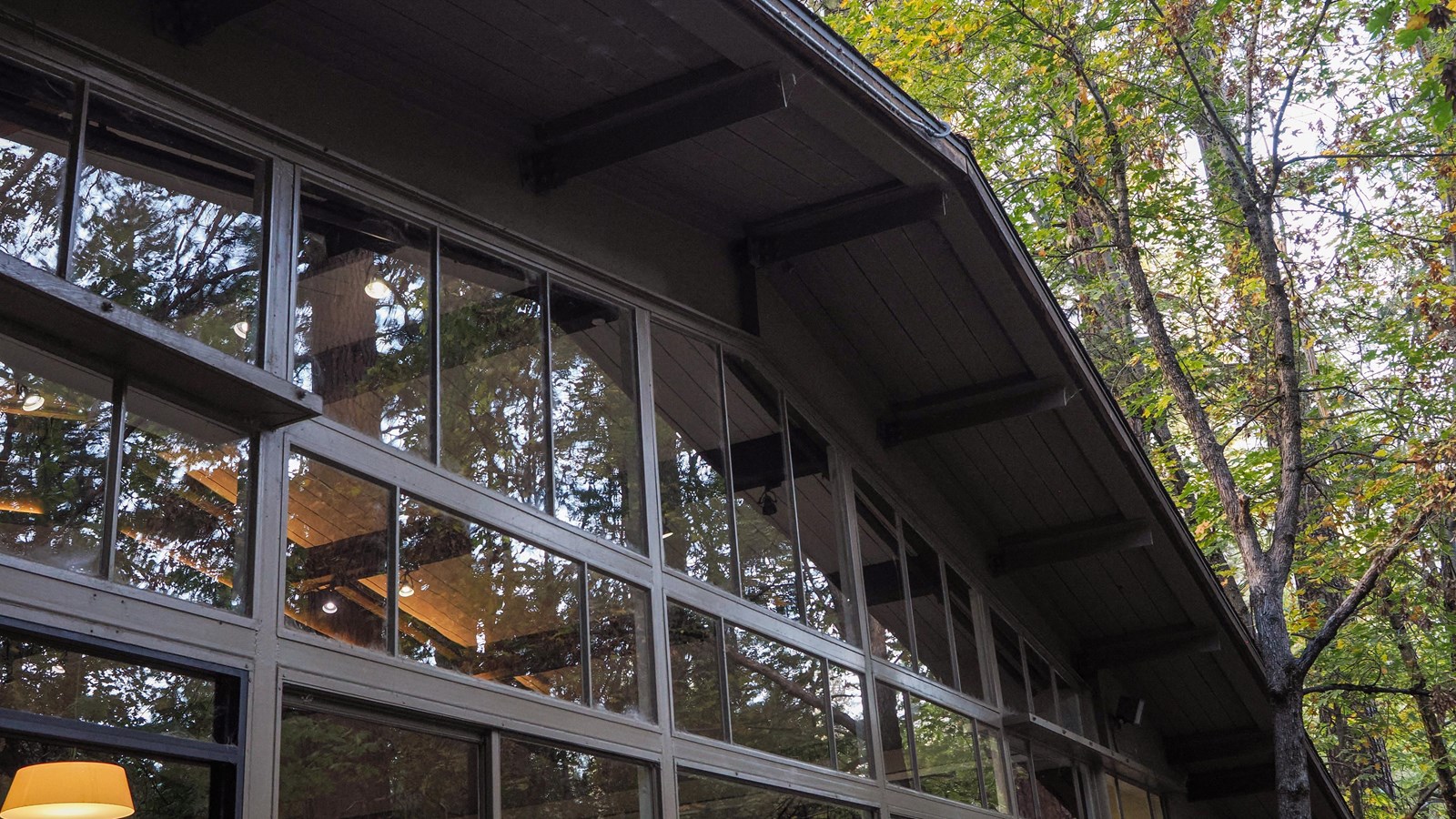Last updated: October 20, 2023
Place
Yosemite Valley Lodge Architecture

Architect Eldridge T. Spencer designed three new buildings oriented around a central courtyard. Most buildings are connected by covered walkways. This comprehensive building and landscape plan includes the present-day guest registration area, cafeteria, restaurant, cocktail lounge, outdoor amphitheater, and gift shop. Completed in 1959 at a cost of $1.5 million, Yosemite Lodge, as it was then known, was the most expensive project the Yosemite Park and Curry Company had taken on up to that point.
Spencer was inspired by John Muir’s words describing the Sierra Nevada mountains as a “range of light.” When designing the lodge complex, Spencer incorporated a sense of openness and lightness. The walkways and courtyard between buildings take the visitor through natural environments and views of Yosemite Falls. The large window walls create a sense of openness and allow natural light and scenery to reach visitors indoors. Steel framing and glass windows are unobtrusive and blend with the natural environment. The low horizontal massing of the buildings does not compete with the grand height of Yosemite Falls and nearby trees, allowing visitors to appreciate the sense of scale.
Like other Mission 66 buildings in Yosemite Village, the lodge complex features mountain chalet motifs. For instance, inside the cocktail lounge, a large central fireplace features stylized images of skiers embossed in metal. Vaulted wood panel ceilings in several buildings impart both openness and warmth.
